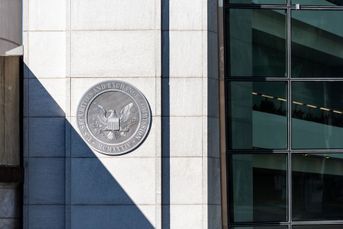Financial literacy: An epic fail in America

How serious is the issue of financial literacy in the US and what can be done about it? Find out here
Updated December 5, 2023
We teach our children to wear seat belts. Schools invest in programs aimed at helping kids practice smart internet habits. But few are talking about the dangers of too much debt or the blessing that is compound interest. In other words, we aren’t teaching our children enough about the importance of financial literacy.
As a result, Americans are saddled with huge loans and too little or no retirement savings at all. As the gap between rich and poor widens, it’s clear that financial literacy is one of the factors that separate the haves from the have nots. Financial advisers recognize the problem: 78% strongly agree financial literacy is a concern in the U.S., according to a survey of advisers by InvestmentNews.
But there’s a disconnect — only 4 in 10 advisers are doing anything to address the problem, meaning the majority are ignoring the issue. In this article, we delve into some of the most common causes of this issue and provide suggestions on how to improve financial literacy.
Common problems in financial literacy
Let’s go over some common problems and possible solutions:
Problem 1: “Americans Say High School Left Them Unprepared for Handling Money”
A commonly heard gripe among young Americans who start earning is realizing how ill-equipped they are in the knowledge of handling their hard-earned money.
In 2023, the Ramsey Report found that 88% of American adults admitted that high school did not make them “fully prepared” for handling money once they struck out on their own. 75% of American adults also said in the years following high school, they often (32%) or sometimes (42%) felt stress due to financial issues.
Possible fix: Teach ‘em while they’re young
The same study also found that only 17% of US adults said they had a personal finance class in high school. Perhaps a good way to change this disturbing trend is to teach Americans about financial literacy before they even reach high school.
There have been a few programs to push financial literacy in high school. As of 2022, the results have been promising. While the study does say that many Americans are financially illiterate, their numbers decrease with each succeeding generation.
Among those surveyed, 30% of adults were Gen Z adults who had taken a personal finance course, compared to millennials at only 20%. Gen X adults followed close behind at 17%, with baby boomers in last place (7%), having never taken a personal finance course.
Problem 2: “Americans Regret Not Learning About Personal Finance in High School”
A whopping 8 out of 10 Americans regret not learning about money in high school. They also believe that having that sort of knowledge would have placed them in a better position to manage their money and know how to save and invest.
The same 80% also agreed that they would have started out with better money management skills if they had learned more about personal finance in high school.
Possible fix: get financial advisers to pitch in with the academe
To further reduce the number of financially illiterate Americans, financial advisers can lend their time and expertise as adviser volunteers, working hand in hand with academic institutions. Here’s how financial advisers can help students in different levels:
Join an existing elementary school program
Creating a financial literacy program, then integrating it into an elementary school program, can be challenging in this era of core curriculum mandates. As a solution, some advisers suggest joining an existing and proven program. There are successful programs that are always open and eager for new volunteers.
Work through a local library
Public libraries are usually ignored, but they still remain a vital and active part of our educational infrastructure. What’s more, libraries tend to be more open to new ideas and are receptive to having more community involvement in programming than schools.
You may be surprised at how receptive some public libraries can be to volunteers for educational efforts for children and other underserved groups.
Participate in “Career Day”
Find out when local high schools conduct “career day” events. If none exists, you can suggest that a financial education event be held at those high schools. Once started, you can then participate in introducing students to the idea of giving financial advice as a career, what it’s like to work as a financial professional, and discuss the importance and content of personal finance.
Teach a financial literacy course
Check local schools that offer these courses and volunteer. You can use one of the financial literacy courses offered by educational institutions or design your own and offer to teach at a local high school. If you are unable to find a school, consider hosting a financial literacy workshop or an event at your firm or office.
Offer your services pro bono
Contact the alumni office of your alma mater, then offer to serve as a pro bono adviser to students who need financial advice. You can teach them about student loans, car leasing, credit, savings, insurance, and job benefits. If you were a member of a fraternity or sorority at college, you can offer similar pro bono services to current fraternity or sorority members.
Establish paid internships for peer-to-peer literacy counseling
As peer-to-peer learning gets better results than lectures from older experts, consider creating a paid internship program for interested college students. This can also help teach them how to become financial literacy trainers for their classmates.
Offer to include a financial literacy component in wellness programs. Many campuses offer wellness programs that promote physical and mental well-being. Contact a local college that offers such a program, and volunteer to teach a financial wellness component that would cover the basics of saving, spending, credit, credit cards, the importance of a credit score, and investing.
When it comes to content, financial advisers can refer to videos like this one to get an idea of what to teach. The video gives examples of topics you can teach, such as investing, saving, and credit in an easy-to-understand format.
Problem 3: “The Lack of Personal Finance Education in America”
Financial literacy and the lack of it has had a greater impact on the US economy than some of us would care to admit. For instance, it’s been revealed that financial illiteracy, coupled with unscrupulous mortgage firms, was responsible for both the stock market and housing crash of 2008.
These mortgage firms leveraged rising home prices to justify granting mortgages to people with limited assets. Individuals were sold homes that they typically couldn’t afford. If more people aren’t financially literate, crises like these can happen again and again.
Here are other important facts about how the lack of personal finance affects American families:
- 56% of Americans do not have enough savings, much less an emergency fund to cover a $1,000 emergency expense
- According to a survey of 2,700 adult workers, 32% use up all their money before payday (this includes those whose earnings are $100,000 or even $200,000 a year)
- Household debt continues to rise, growing by $3.5 billion dollars in just the third quarter of 2021
- Only four in seven Americans are considered “financially literate”
- Only 24% of millennials understand basic financial concepts
Possible fixes:
Here are a few measures that can be taken to tackle financial illiteracy:
Teach the young, but don’t forget the old
Studies have shown that children who start with a savings account are 6 times more likely to go to college. They’re also 4 times more likely to invest in stocks when they reach adulthood.
Meanwhile, their parents should likewise have access to courses on financial literacy. “Parents can’t teach what they were never taught,” says Tanya Van Court, founder and CEO of savings app Goalsetter. “That means we have generation after generation just trying to get by. Children who are financially uneducated become adults who are financially uneducated, and on and on we go.”
Get all relevant sectors involved
Legislators, financial advisers, schools, parents, and the finance industry should all pitch in to ensure that Americans get the right education and tools for financial literacy. No single sector can tackle this problem alone. It takes a village to mitigate financial illiteracy. It must be done with a sense of urgency – the sort of urgency that gave bailouts to huge banks in 2008.
Educate everyone, including and especially people in disadvantaged communities
Although financial illiteracy is an issue that doesn’t see race and socioeconomic lines, it is a problem that is felt more severely in communities of color. As such, we must identify the root cause of the issue and take steps to address it. One such action is to infuse smart financial decision-making programs into these communities.
Does taking a financial literacy course in high school make a difference?
The easy answer is yes. There have been studies showing that financial literacy classes or courses in high school have had a positive impact on students’ financial knowledge and financial behavior. It was found that:
1. A well-designed curriculum and properly trained educators are effective
A study showed that a well-designed personal finance course (lasting for at least a semester) delivered by educators who had a 30-hour, week-long training program improved the average personal finance knowledge of students. These students mastered all standard and conceptual areas covered by the researchers’ assessment examination.
2. Mandated financial literacy education improves credit behavior
There were three US states where personal finance high school education mandates were enacted.
In these states, credit scores and default rates of students who took these classes were compared with other students in bordering states with unchanged financial literacy requirements.
The mandated personal finance classes improved the credit scores and brought down the default rates of young adults. Meanwhile, no meaningful changes were found in the bordering states.
3. Educators who learn to teach personal finance at the graduate level effect more improvement
Students who received personal finance education from trained teachers gained higher levels of financial literacy. It became on par with the financial literacy levels of those from Generation X (ages 35 to 49) and higher than that of older Millennials (ages 18 to 34).
Financial literacy is a hugely important life skill that is unfortunately not given emphasis in the American education system.
A lack of personal finance education has adverse effects on individuals. This causes them to make poor financial decisions, accumulate debt, and deprive themselves of better financial opportunities. To fix this issue, simple but radical steps like overhauling the educational system to include financial literacy are necessary.
The academe, lawmakers, and the financial industry should pool their efforts to ensure financial literacy for Americans. They should work together to equip the public with the knowledge and tools necessary to make the right financial decisions throughout their lives.
If you’re a financial adviser looking to build your expertise, subscribe to Investment News. Get unlimited access to news, stories, and features to keep you at the forefront of industry trends.
Learn more about reprints and licensing for this article.








